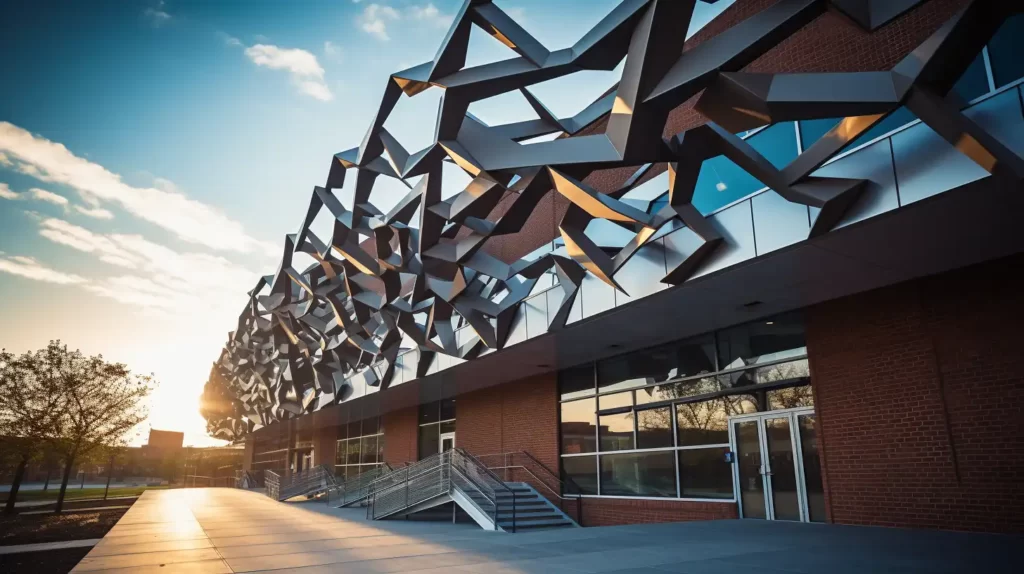In the world of art and architecture, Architectural metal fabrication for custom sculptures stands as a beacon of innovation and creativity. This intricate process not only enhances the aesthetic appeal of spaces but also serves functional purposes. Whether you’re an artist, architect, or simply someone interested in the transformative power of metal, understanding this craft can open doors to endless possibilities.

What is Architectural Metal Fabrication?
At its core, architectural metal fabrication involves the crafting and assembling of metal structures to form unique designs. This process is employed to create custom sculptures that can range from small decorative pieces to grand public art installations. The versatility of metal as a material allows for a wide array of shapes, sizes, and finishes, making it a favored choice among artists and architects alike.
The Importance of Custom Sculptures
Custom sculptures play a pivotal role in defining the character of a space. They can convey cultural narratives, evoke emotions, and even spark conversations. Through architectural metal fabrication, these sculptures gain durability and sophistication, ensuring they stand the test of time while maintaining their intended impact.
Materials Used in Metal Fabrication
The choice of materials is crucial in architectural metal fabrication. Common metals include stainless steel, aluminum, and bronze. Each metal offers distinct properties such as corrosion resistance, strength, and malleability, which influence the design and durability of the sculpture.
Techniques in Metal Fabrication
Several techniques are involved in the fabrication of custom sculptures. These include welding, cutting, and forming. Advanced methods like metal etching and metal patina are often used to add intricate details and textures, enhancing the visual appeal of the sculpture.
Designing Custom Sculptures
The design phase is where creativity meets practicality. Artists and architects collaborate to conceptualize sculptures that align with the vision of the project. This involves sketching, 3D modeling, and prototyping to ensure the design is both feasible and impactful.
Role of Technology
Technology plays a significant role in modern architectural metal fabrication. Tools like CAD software and CNC machines allow for precise design and execution, reducing errors and enhancing efficiency. This technological integration ensures that even the most complex designs can be realized with accuracy.
Applications of Metal Fabricated Sculptures
Metal fabricated sculptures find applications in various domains, from public parks and urban spaces to corporate offices and private residences. They serve not only as visual landmarks but also as symbols of innovation and creativity.
Public Art Installations
Public art installations are perhaps the most visible examples of architectural metal fabrication. These sculptures often become iconic symbols of their locations, attracting tourists and locals alike.
Corporate and Residential Spaces
In corporate and residential settings, custom sculptures add a touch of elegance and sophistication. They can be designed to reflect the identity of the company or the personal taste of the homeowner, creating a unique and personalized environment.
Challenges in Metal Fabrication
While architectural metal fabrication offers numerous advantages, it also presents several challenges. These include managing material costs, ensuring structural integrity, and adhering to project timelines.
Cost Management
One of the primary challenges is managing the costs associated with materials and labor. Effective budgeting and planning are essential to keep the project within financial constraints.
Ensuring Structural Integrity
The structural integrity of a sculpture is paramount, especially for large installations. Engineers and fabricators must work closely to ensure that the sculpture can withstand environmental factors and maintain its form over time.
Future of Architectural Metal Fabrication
The future of architectural metal fabrication looks promising, with advancements in technology and materials driving innovation. Sustainable practices and the use of eco-friendly materials are becoming increasingly important, paving the way for a more responsible approach to sculpture design and fabrication.
Sustainable Practices
As awareness of environmental impact grows, the industry is shifting towards sustainable practices. This includes recycling materials, reducing waste, and opting for environmentally friendly finishes.
Innovations in Materials and Techniques
Continuous research and development are leading to new materials and techniques that enhance the capabilities of architectural metal fabrication. From lightweight alloys to advanced coating technologies, these innovations are expanding the possibilities for custom sculptures.
Conclusion
Architectural metal fabrication for custom sculptures is an ever-evolving field that combines artistry with engineering. It offers endless possibilities for creating impactful and enduring pieces that enrich our environments. As technology and sustainability continue to shape the industry, we can expect even more innovative and inspiring creations in the future.

FAQs
What are the benefits of metal fabricated sculptures?
Metal fabricated sculptures are durable, versatile, and can be crafted into a wide range of designs. They offer both aesthetic and functional benefits, making them ideal for various applications.
How is technology used in metal fabrication?
Technology, such as CAD software and CNC machines, is used to design and execute precise sculptures. This integration enhances efficiency and reduces errors in the fabrication process.
What is the role of sustainability in metal fabrication?
Sustainability is becoming increasingly important in architectural metal fabrication. The industry is adopting eco-friendly practices, such as recycling materials and using sustainable finishes, to reduce environmental impact.
This article contains affiliate links. We may earn a commission at no extra cost to you.

